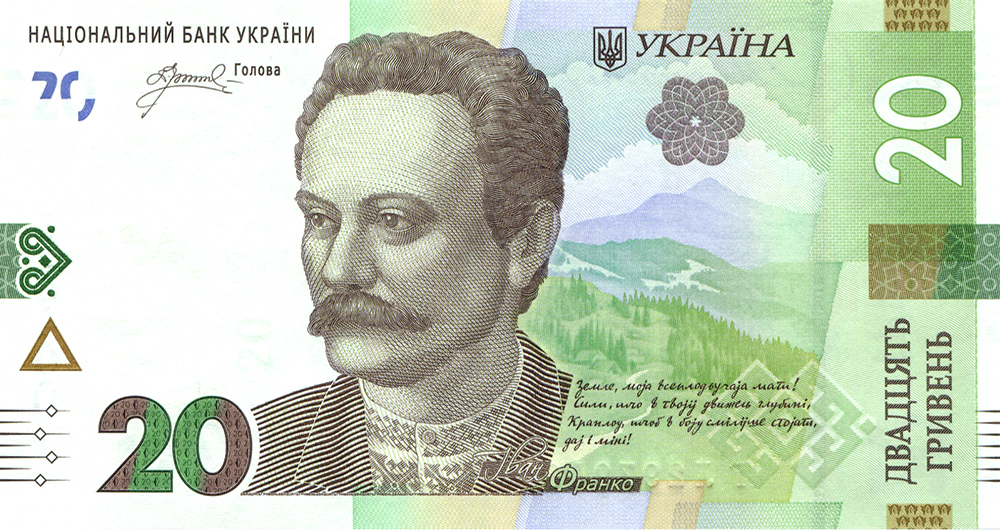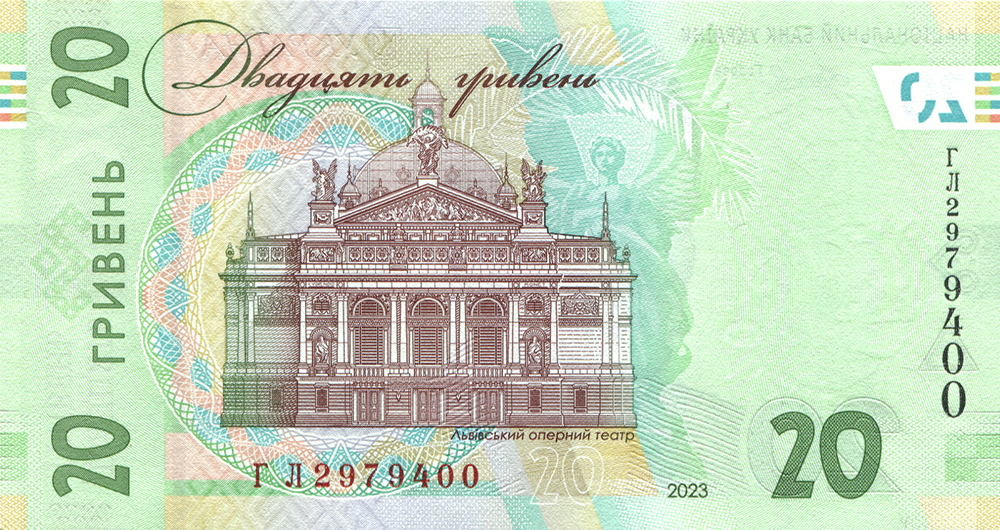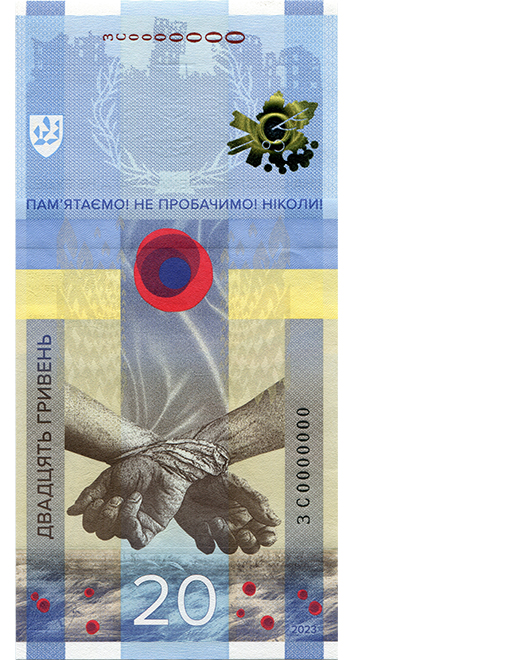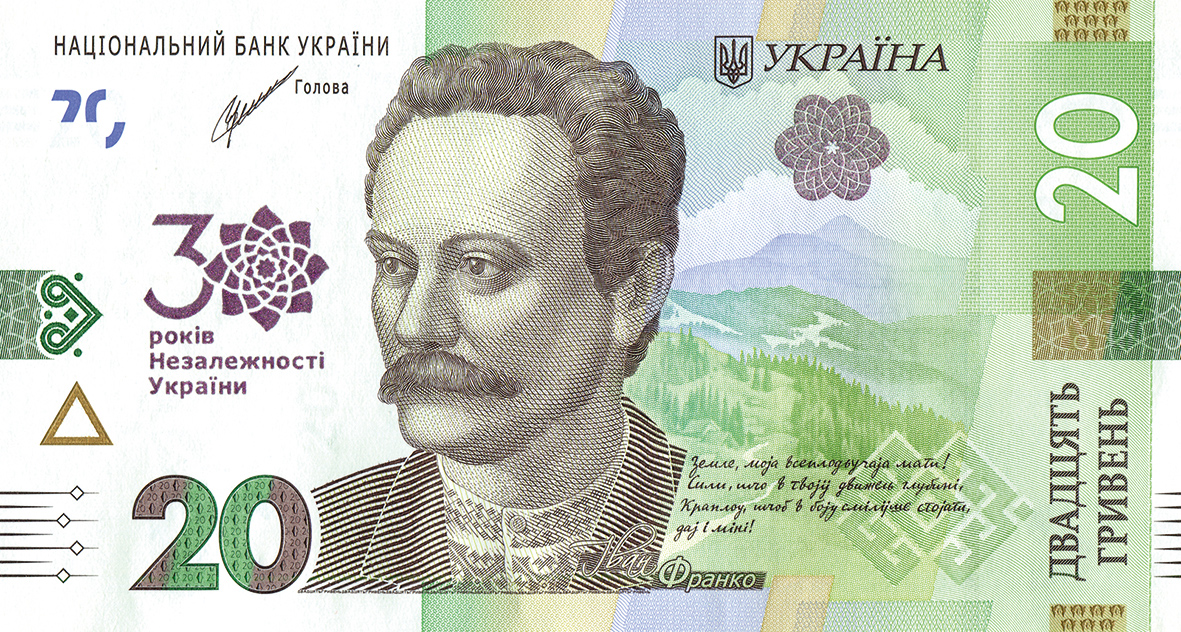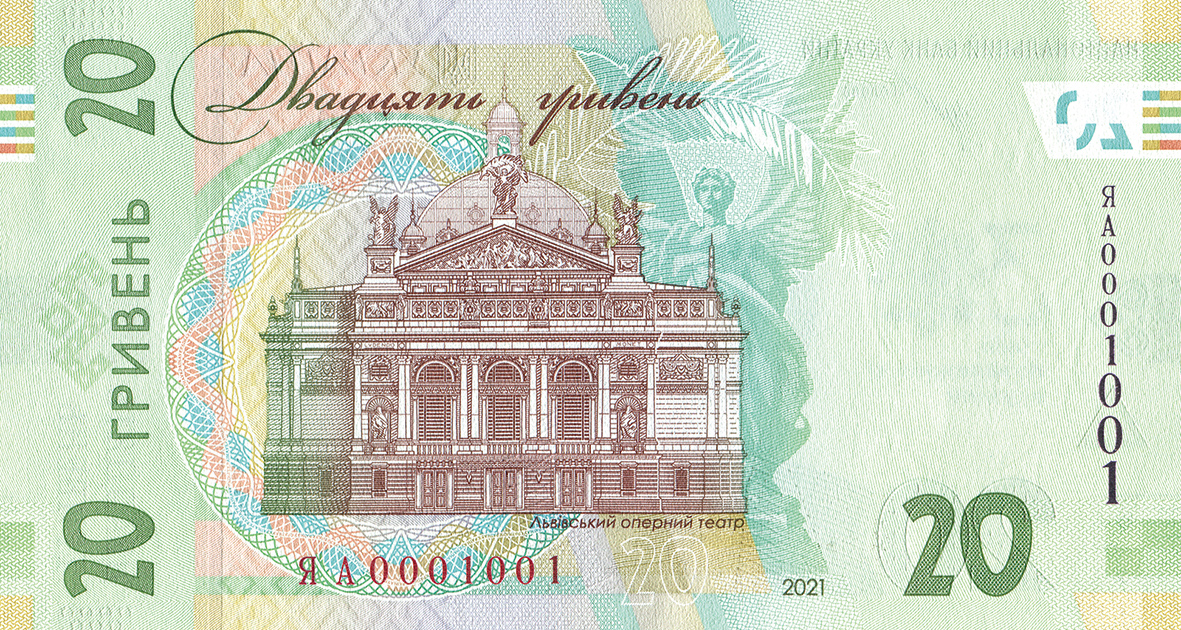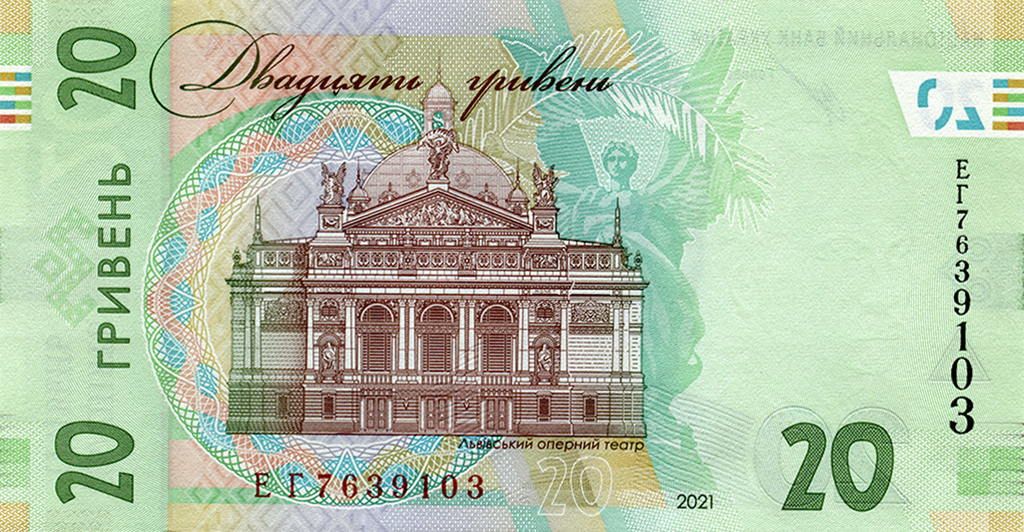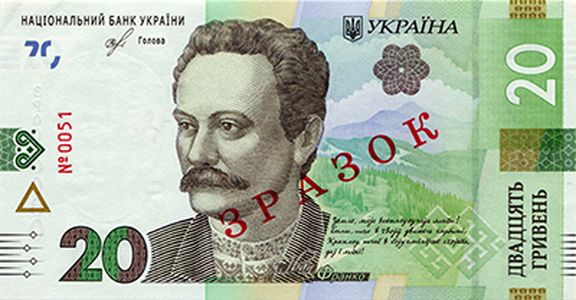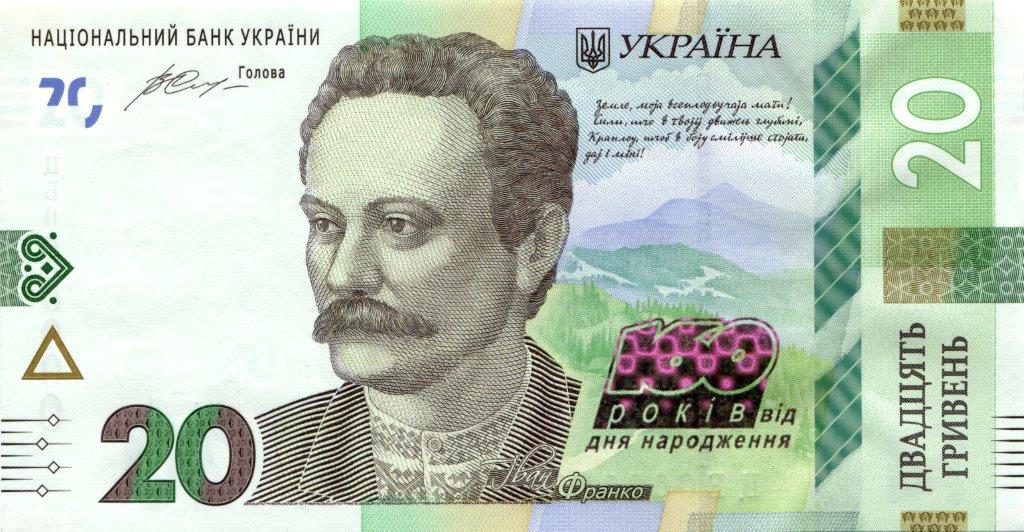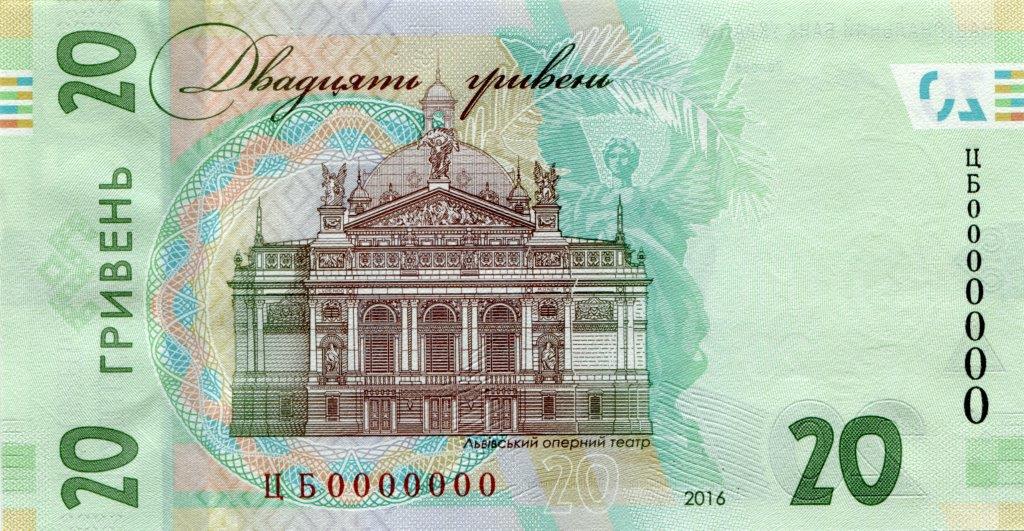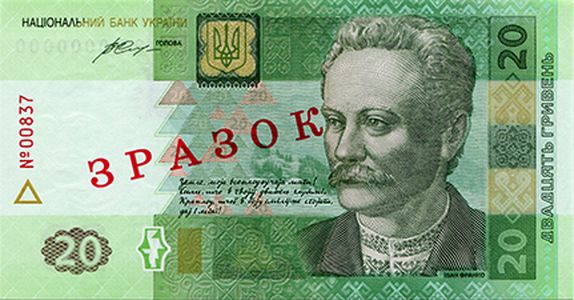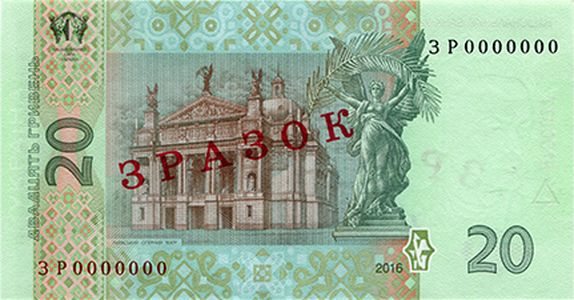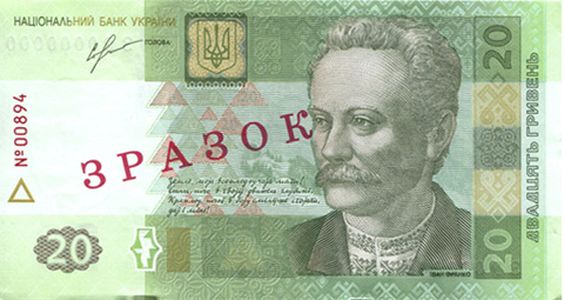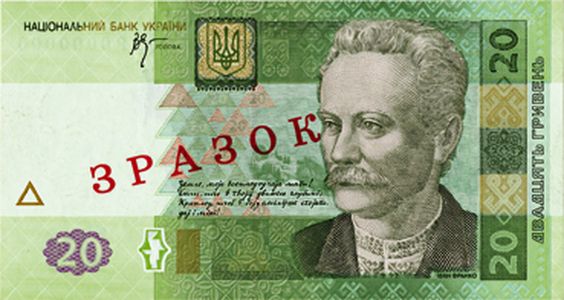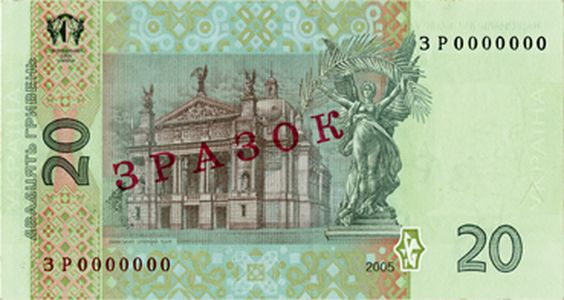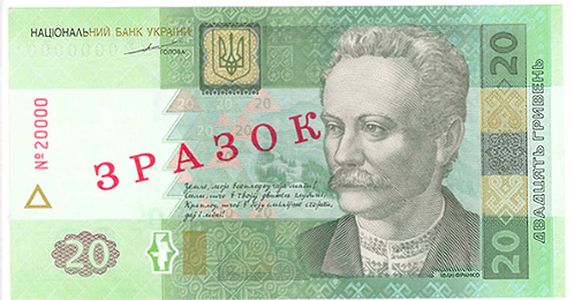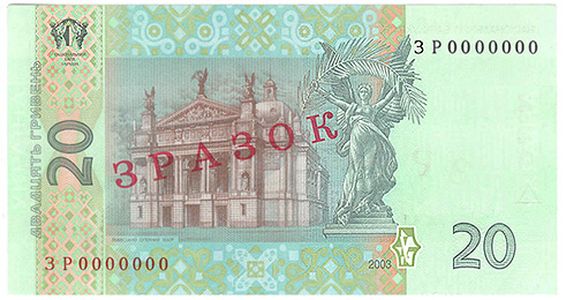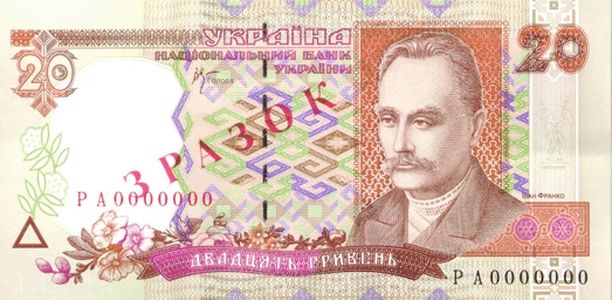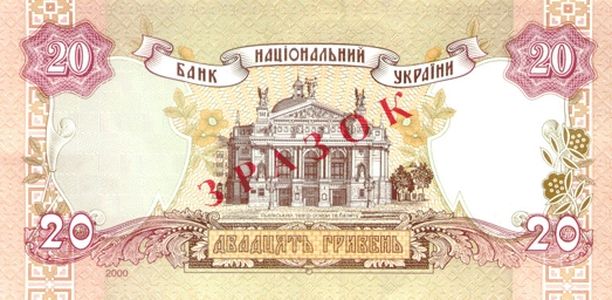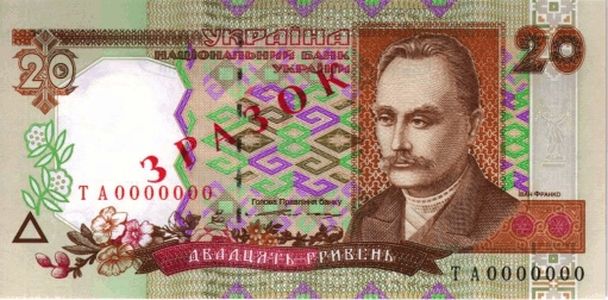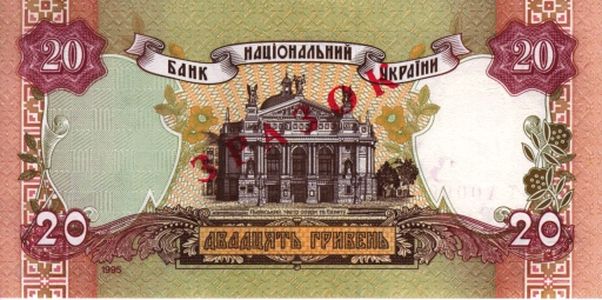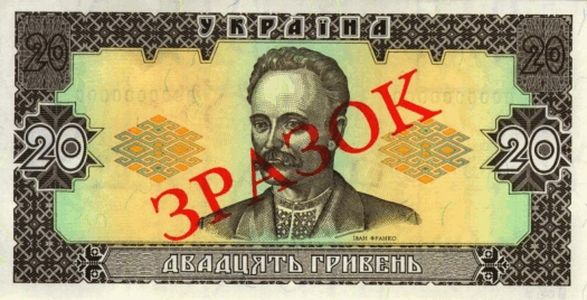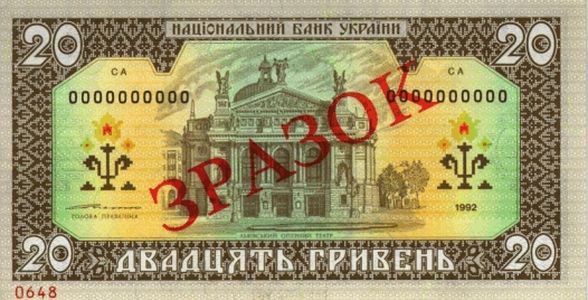On the front of the banknote there is a portrait of Ivan Franko.
Ivan Franko (1856 – 1916) was a prominent Ukrainian writer, critic, translator, opinion journalist, sociologist, ethnographer, historian and philosopher whose activities were guided by the idea of promoting the interests of Ukrainians and universal human values. A unique phenomenon, his works represent an entire spiritual epoch in Ukrainian history and a significant contribution to world literature.
On the back of the banknote there is an image of Lviv Opera House.
Lviv Opera House was built in 1900 to a design by the architect Zygmunt Gorgolewski.
Security features
The banknote is printed on tinted paper of greenish color, which is the dominant color of the images on the banknote. The size of the banknote is 69x130 mm.
The paper contains a local multi-tone watermark, light watermark element, security thread and security fibers.
1. Watermarks (visible when the banknote is held up to the light): the multi-tone watermark is a repeated portrait of Ivan Franko formed by the paper’s internal texture in different tones; the light watermark element represents the denomination figures (placed vertically in the lower right part of the multi-tone watermark).
2. The optically variable element is a stylized image of a flower to the right of the portrait of Ivan Franko. When the banknote is tilted, the color of the flower changes from purple to olive green.
3. The security thread is an embedded polymer strip with the images of "20 ГРН", the trident and the denomination figures "20" in two lines, which are visible (normal and reverse images) through a magnifying glass.
4. The relief images are graphic images on the front of the banknote which, as a result of raised printing, feel rough to the touch. They are:a sign for the partially sighted, a fragment of the portrait, inscriptions, and images.
5. The latent image (numerical indication of the denomination): when the banknote is held at a sharp angle to the light at eye level, the denomination numerals become visible, and are dark against a light background if looked at from the long side, or light against a dark background if looked at from the short side.
6. The see-through element is a composite image of the denomination numerals that forms the full image when the banknote is held up to the light.
7. Orloff printing is a special printing technique that provides for an abrupt transition of one color into another without breaks in, and displacements of, the image elements.
8. Rainbow printing is a special printing technique that allows there to be a gradual transition from one color to another without breaks in, and displacements of, the image elements.
9. The microtext consists of repeated inscriptions that can only be read with a magnifying glass.
10. The serial numbers are printed in letterpress printing: horizontally in red ink, and vertically (with a change in the height of the figures) in black ink.
11. The copy-evident pattern consists of thin lines of different geometric shapes that form a moiré pattern when copied or scanned.









